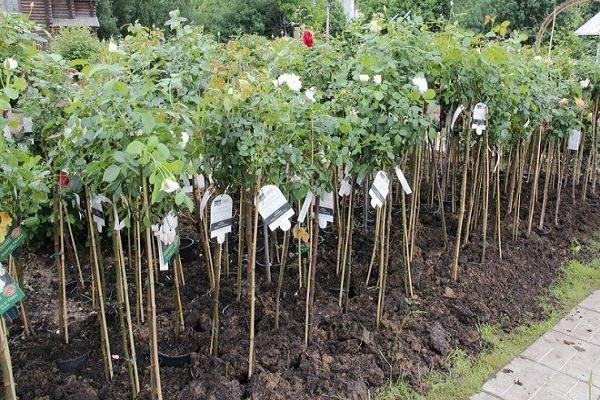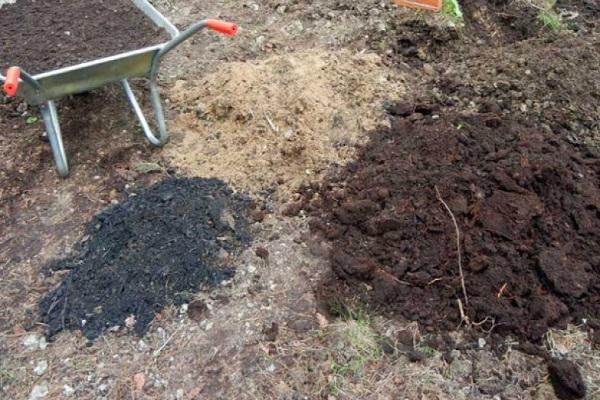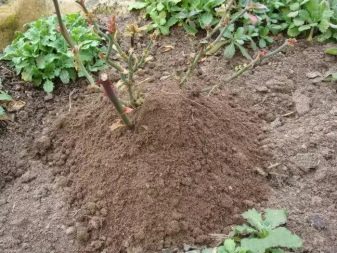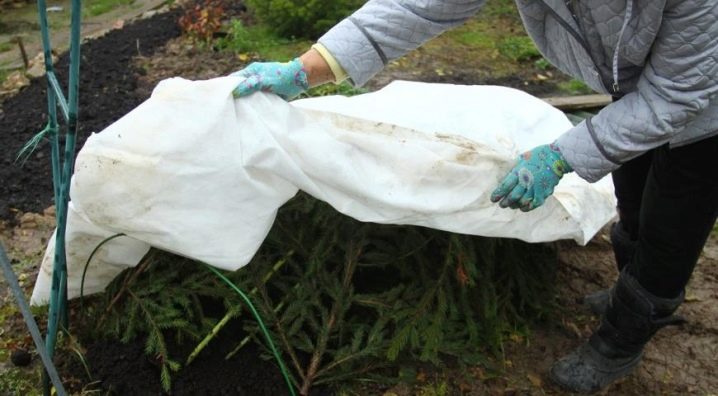Features of varieties
Orange roses became popular in the last century. French breeders conducted various experiments, crossing red, pink, white, yellow varieties - the result surprised with a bright sunny, sometimes honey color. Today, the demand for such flowers is very high. It is quite possible to find planting material in our country, as well as to grow such beauty on your site. Today, more than a dozen of these unique varieties are known, among which we will present descriptions of the most common.
Ninetta is petite. It grows up to 30 cm. The bud is small, neat, there is a slight doubleness. One shoot contains about 8 buds. The color of the leaves is dark green, a pronounced gloss is noticeable. Gardeners recommend planting along footpaths or flower beds.

- Clementine. Smaller representative of the plant. Suitable for growing in the garden or in the room. The bush grows quite lush, covered with bright buds - there are about 10 of them on the shoot.
- Goldelse. Floribunda rose. It is distinguished by its large size - a height of about a meter, large buds that resemble glasses. There is a pleasant aroma. It tends to fade under the sun, so the roses turn yellowish.


- Orangerie. German variety floribund. The flowers are double, their diameter is 8 cm. The form is classical. The petals are painted in a bright orange color that does not fade in the sun. There is a light scent. The plant is not afraid of cold weather and fungal diseases. Preferably planted in a sunny location Emilien Guillot. Refers to shrub varieties. I fell in love with gardeners for an unusual color - orange-red. The bush is overgrown with sweeping green leaves.
- Lady Emma Hamilton. The English rose reaches a height of 1.5 meters. The lush bush is overgrown with tangerine flowers with light terry. Has a rich smell. Differs in a long fruiting period.


- Orange Intuition. Hybrid tea variety. A distinctive feature is the double color of the buds: tiger carrot-scarlet is combined with strokes of a cream shade. The size of the flower is 9 cm, the bush is 1.2 m. The average degree of resistance to diseases, tolerates winter well.
- Super Trouper. A variety suitable for cold regions of Russia. The petals are colored copper-orange, the bushes are low - only 0.8 m, the smell is weak.
- Easy Does It. Apricot roses have double wavy petals. Differs in good survival rate in the middle lane. A meter-long bush is densely overgrown with buds.
- Sahara. The main advantage of the scrub rose is frost resistance. The buds are bright orange, the rims are scarlet.
- Farandole. Takes first place in terms of saturation, color fastness. The buds are not afraid of prolonged sun exposure.
- "Orange Meilandina". Found in hanging pots. The petals are fiery, the leaves are dark green. The bush grows large, spreading.
High varieties of hybrid tea roses
Here you will find photos and names of varieties of hybrid tea roses with a bush height of one meter:
Red Velvet. One peduncle bears one goblet-shaped bud. The buds open very slowly into flowers. The name of this hybrid tea rose is given for its color: the flowers of the plant are dark red, densely double. The diameter of the flower in full dissolution is 12 cm. The leaves are large, dark green, shiny. The bush is upright, 1.0 - 1.8 m high.
Rafaella. One peduncle bears one goblet-shaped bud. The buds very slowly open into flowers - scarlet, at the base of the petals - pink, densely double. The diameter of the flower in full dissolution is 10-12 cm. The leaves are very large, dark green, shiny. The bush is upright, 1.0-1.8 m high.
Rose Gozhar is a very famous variety.The flowers are large, double (up to 30 petals), two-colored. The color of the petals is cherry red, silvery white outside and at the base. The aroma is weak. The leaves are large, dark green, highly shiny. Bushes are powerful, up to 110 cm in height. The advantages of the variety include resistance to adverse conditions.
"Texas apricot". The flowers are large, up to 14 cm, double, apricot-colored petals, dense, resistant to rain. The height of the bush is 130 cm.
"Dallas". The flowers are large (diameter 10-12 cm), bright, crimson-red, densely double, long peduncles. Leaves are large, leathery, dark green. Bushes are upright, up to 120-150 cm high, abundantly and continuously flowering.
Timelis. The flowers are creamy, large, about 10 cm in diameter, double (40 petals), fragrant and without aroma, of various colors. The buds are sharp, long, very fragrant. Bushes are straight or spreading. Plant height up to 100-120 cm. Leaves are large, shiny. Flowering continues throughout the summer. Straight bush, high.
Queen Amazon. The bud is tall, the color at the base is white with a gradual transition to pink and red-crimson edges. The flower is large, 10-12 cm in diameter, double (45-50 petals). The bush is high - up to 120 cm.
Sky Line. The color of the flower has a unique light orange color, which is combined in a special way with the dark green shiny foliage. The cup-shaped bud opens almost completely and reaches approximately 12 cm when unfolded. The height of the bush is about 100 cm.
A number of varieties of roses with powerful bushes up to 1.5 m in height with large and fragrant flowers are allocated in a separate group - grandiflora. The varieties of this group occupy an intermediate position between hybrid tea roses and floribunda, since they were obtained as a result of crossing them.
The most famous varieties of this group are: "Rosso Wine", "Queen Elizabeth", "Montezuma", "Gold Coast", "Mount Shasta", "Stella", etc.
Queen Elizabeth. A richly flowering cultivar with shiny dark green foliage. Large pink flowers, double (38 petals), in brushes of 3-15 pieces. The diameter of the flower is 10 cm. It has a delicate aroma. The petals are dense, do not deteriorate by rain, in hot climates they fade to pale pink. Plant height 100-150 cm.
This video presents high varieties of hybrid tea roses:
Landing features
Before planting, it is important to decide in what way you want to get a beauty: to plant or buy a ready-made seedling. Today it will not be difficult to find a seedling on sale - of any variety, of any color.
You just need to choose the right seedling so that you are not deceived, and then plant it on the site.
Seedling selection rules
There are few of them; what you should pay attention to:
- Standard rose seedlings are usually sold rooted in containers.
- The crown is well developed and has strong shoots.
- The stem or trunk is even, with formed bark, its diameter should be at least 1 centimeter.
- The leaves are juicy, not yellowed and without spots.
- Root neck without signs of disease.
The seller must be consulted on the subject of the variety, type, in order to further decide on the care of the rose.

Choosing the right place
Attention to the standard rose should be paid more than a simple one. A plot in the garden for her needs to be chosen sunny, but without scorching sun rays and away from the prevailing winds.
Optimal timing
The best dates are for planting a standard rose seedling: late April-early May. But during the summer, planting young trees is not prohibited, until September, so that the root system has time to take root.
Site preparation
Many varieties of standard roses tolerate any soil, since their base is not a rose, but a stock. But the best are light loamy soils, into which organic matter, compost and sand can subsequently be added. If there is not enough space on the site, and you have to plant in the old place, then the top layer is removed about 70 centimeters and a fresh one is poured.
The soil is dug to a depth of 50-70 centimeters so that it becomes airy and light. The reaction of the soil should be either neutral or slightly acidified (5.5-6.5). The pit is dug quite spacious, since the root system must be neatly laid out around its perimeter.

Optimal layout
When determining the distance between neighbors, the size of the crown should be taken into account; it should be about 1 meter, no less.
Landing technology
Step-by-step technology for planting a standard rose:
- Take a strong stake and treat its end with an antiseptic to a depth of incorporation into the soil, at least 50 centimeters.
- In the installed position, it should not exceed the height of the crown.
- It is placed on the side of the prevailing wind so that the tree does not sway.
- The root system of the stem is lowered into the hole and the root is straightened. The seedling should be positioned slightly tilted towards the stake on the opposite side.
- The roots are covered with earth and compacted.
- The stem is tied with soft threads in several places, and in order not to cut the bark, the trunk is wrapped with soft material under the threads.
- Half of the root collar is buried in the hole.
Humus, sand and peat can be poured at the bottom of the hole so that the plant receives nutrients during regrowth.

Grafting
Grafting of roses on a stem is carried out in the same period as in ordinary rose crops.
Budding
The most commonly used procedure is called budding - grafting is carried out with the help of a bud from a cuttings of a selected variety of roses.
To get a positive result, it is recommended to take 3 or 4 buds at once from the central part of the one-year shoot. Experts advise to cut the chip from the bottom up.
Then on the rootstock at the grafting site, the bark is cut in the form of the letter "T". A cut kidney is inserted into the incision, the entire area is carefully tied with tape, capturing 2 cm from above and below. Only the peephole should remain outside.
The result of the procedure will become apparent in a month - the bud will begin to grow, and the leaf petiole will disappear.


Cuttings
You can graft varieties of roses to the stock using cuttings. To carry out this procedure, a split is made on top of the rootstock. Young healthy cuttings are cut off from the grafted bush, sharpened from below and inserted into the prepared split. For high-quality pressing, the barrel is wrapped with tape.
To protect open sections from insect larvae, diseases and decay, they are coated with garden varnish.
In both cases, after grafting, the trunks are prepared for wintering: they cover, undermine and bend down.


After the onset of spring, the buds should begin active growth. All the next summer, one should deal with the formation of the crown of a rose tree, achieve its splendor and uniform shape.
To plant the variety effectively, it is best to use proven, climate-resistant roses.


How to trim correctly?
Plants of the New Jersey variety need high hilling for the winter, and pruning in the spring. This is an important point in growing roses that cannot be overlooked.
It is important not to miss the moment and carry out the pruning before the growing season. To do this, they simply shorten several buds with a pruner.
In the first year, pruning is done by 2 buds, in subsequent years - by 5. The cut is made 1 cm above the outer kidney.


If in May the roses throw out shoots, their tops are pinched. This is done in order for the bush to branch out as best as possible in the future. Pruning can be done in summer to allow the plant to bloom again profusely.

In the fall, the time for pruning roses is usually the end of October. It is worth removing unblown or dried buds and diseased, damaged and dry shoots, which, if left on the bush, usually become a source of all kinds of diseases in the future. After pruning, the bushes are insulated with spruce branches, and the base is covered with peat. And in the cold northern regions, roses will need shelter when a homemade box with some kind of natural insulation is installed on the bush.

Description
Bushes "New Jersey" are about 1 meter high, about half a meter wide and exude a rich aroma of buds. The leaves are glossy, dark green in color, and the petals are distinguished by an unusual two-tone color. Flowers "New Jersey" are red-yellow, densely double, have up to 50 petals per bud, which can reach 7-8 cm in diameter. Such roses have a special charm during their abundant flowering.
Such picturesque flowers (red at the edges and yellow in the middle) will surely attract the attention of many neighbors to your site. Since the yellow tint smoothly spreads only to the inner side of the petals, it seems that they are inside like red-hot coals.


Growing a rose on a stem is one of the most popular design options in the garden. Stamp roses are a form of a plant that is obtained by grafting a rose onto a rose hip stem. Also, such colorful and fragrant flowers are great for cutting. In this case, for longer storage, you can simply add citric or salicylic acid to the water with roses.




